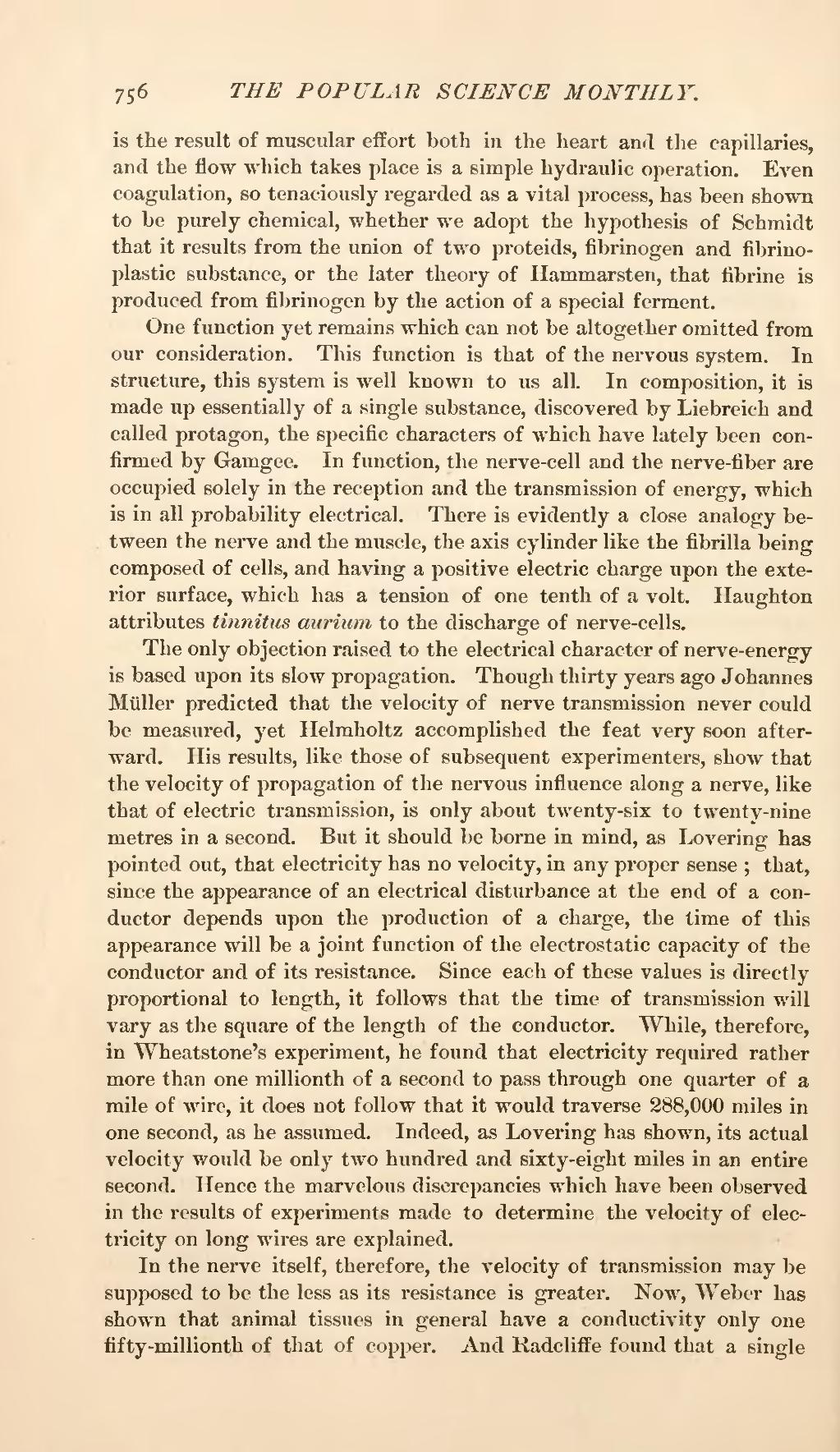is the result of muscular effort both in the heart and the capillaries, and the flow which takes place is a simple hydraulic operation. Even coagulation, so tenaciously regarded as a vital process, has been shown to be purely chemical, whether we adopt the hypothesis of Schmidt that it results from the union of two proteids, fibrinogen and fibrinoplastic substance, or the later theory of Hammarsten, that fibrine is produced from fibrinogen by the action of a special ferment.
One function yet remains which can not be altogether omitted from our consideration. This function is that of the nervous system. In structure, this system is well known to us all. In composition, it is made up essentially of a single substance, discovered by Liebreich and called protagon, the specific characters of which have lately been confirmed by Gamgee. In function, the nerve-cell and the nerve-fiber are occupied solely in the reception and the transmission of energy, which is in all probability electrical. There is evidently a close analogy between the nerve and the muscle, the axis cylinder like the fibrilla being composed of cells, and having a positive electric charge upon the exterior surface, which has a tension of one tenth of a volt. Haughton attributes tinnitus aurium to the discharge of nerve-cells.
The only objection raised to the electrical character of nerve-energy is based upon its slow propagation. Though thirty years ago Johannes Müller predicted that the velocity of nerve transmission never could be measured, yet Helmholtz accomplished the feat very soon afterward. His results, like those of subsequent experimenters, show that the velocity of propagation of the nervous influence along a nerve, like that of electric transmission, is only about twenty-six to twenty-nine metres in a second. But it should be borne in mind, as Lovering has pointed out, that electricity has no velocity, in any proper sense; that, since the appearance of an electrical disturbance at the end of a conductor depends upon the production of a charge, the time of this appearance will be a joint function of the electrostatic capacity of the conductor and of its resistance. Since each of these values is directly proportional to length, it follows that the time of transmission will vary as the square of the length of the conductor. While, therefore, in Wheatstone's experiment, he found that electricity required rather more than one millionth of a second to pass through one quarter of a mile of wire, it does not follow that it would traverse 288,000 miles in one second, as he assumed. Indeed, as Lovering has shown, its actual velocity would be only two hundred and sixty-eight miles in an entire second. Hence the marvelous discrepancies which have been observed in the results of experiments made to determine the velocity of electricity on long wires are explained.
In the nerve itself, therefore, the velocity of transmission may be supposed to be the less as its resistance is greater. Now, Weber has shown that animal tissues in general have a conductivity only one fifty-millionth of that of copper. And Radcliffe found that a single

